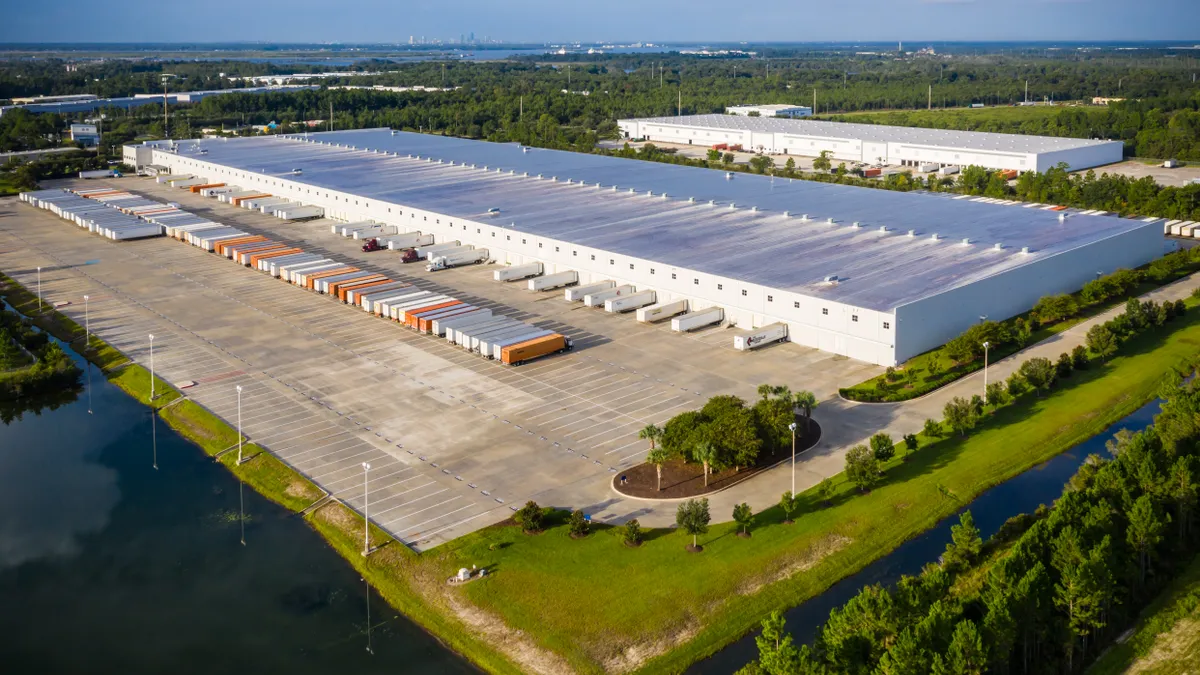The rapid growth of GE Appliances required an amplified logistics network to keep pace now and in the future.
The company has invested $2 billion in its U.S. factories, distribution and warehouse networks to optimize operations between ports and transportation services, Marcia Brey, VP of logistics for the company, told Supply Chain Dive in an interview.
As its distribution network grows, the company also needs better visibility of its inventory flow. One way is through the Freight Logistics Optimization Works program from the Department of Transportation, which plays a “small piece of our larger logistics strategy,” Brey said.
Here’s how GE Appliances is keeping its logistics network resilient, from opening new warehouses to leveraging FLOW.
Hub-and-spoke warehouse network
The company’s new warehouse strategy is leading to more efficient product distribution by having strategic geographic locations that leverage different ports, Brey said.
“We've created a warehouse infrastructure that allows us to have our products on the East Coast, West Coast and then we use a hub-and-spoke warehouse network that we've been developing over the last six, seven years,” she said.

In March, the company opened a warehouse in Greenville, South Carolina, as part of its hub-and-spoke model. South Carolina allows the company to expand its port capacity because multiple ports of call can be made in the Southeast port, creating supply chain resiliency, Brey added.
GE Appliances recently opened a warehouse in Seattle, giving the company additional flexibility by tapping into the Seattle and Tacoma ports, the executive said.
Leveraging FLOW for supply chain resiliency
Visibility through connections contributes to the company’s logistics strategy. This allows GE Appliances to connect with other supply chain peers through the FLOW platform. Current members of the platform include Home Depot, PetSmart and True Value.
FLOW creates a network opportunity for supply chain stakeholders to solve challenges together, Brey said.
Currently, FLOW members meet monthly with experts to discuss different supply chain topics. A recent group conversation focused on the Red Sea due to attacks on cargo ships along with container shipment surcharges.
Better planning comes with expanded data. FLOW provides data on what types and amount of cargo is moving to certain ports from two weeks, four and six weeks out further providing ongoing trends at the ports. But historical data is also needed, Brey said, “because you can't judge what's happening if you don't know where you've been.”
When the Francis Scott Key Bridge near the Port of Baltimore collapsed, GE Appliances evaluated FLOW data to determine the catastrophe's impact on East Coast ports, Brey said. The appliance manufacturer examined cargo headed to ports in New York and New Jersey to determine if volumes were increasing, so it could decide whether to move containers immediately there to protect its customers, she added.
“FLOW gave us an ability to see the trends and see immediately what was happening,” Brey said.
GE Appliances already has data signals that connect to its logistics organization such as factories, warehouse and future customer orders. While FLOW provides essential data, it’s mainly used to confirm existing data and figure out existing trends.
“It's helpful to have that extra layer of visibility into total freight movement through the U.S.,” Brey added. “If we are struggling, maybe at one node we can see what's happening from a U.S. perspective of it.”















